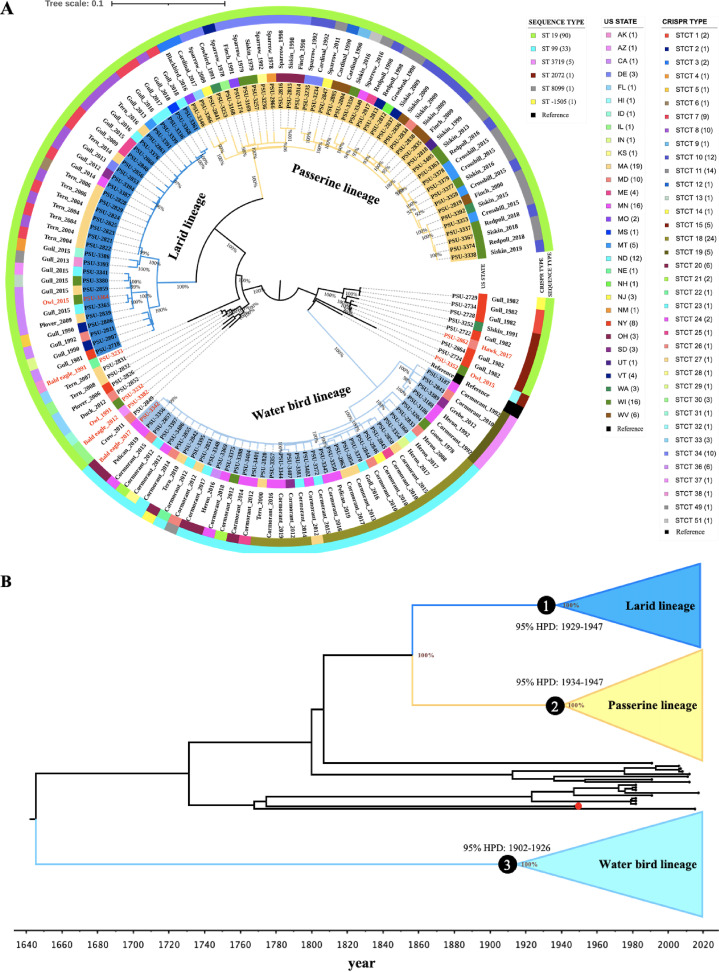FIG 1.
Phylogenetic analyses reveal distinct S. Typhimurium lineages in passerine birds, water birds, and larids. (A) Maximum-likelihood phylogenetic tree of 131 S. Typhimurium isolates from wild birds collected during 1978–2019 in 30 U.S. states. The tree is visualized using iTOL. Three large lineages are defined by bird types, i.e., passerine lineage (yellow), larid lineage (blue), and water bird lineage (light blue). Bootstrap values are displayed as percentage on tree branch. The labels at tips represent the isolate name, the inner color strip represents the U.S. state from which the sample originated, the outmost color strips represent the S. Typhimurium CRISPR type and MLST sequence type, and the text labels between the color strips represent the bird host and isolation year. The legend fields at the right of the tree represent the S. Typhimurium MLST sequence type (number of isolates), U.S. state abbreviation (number of isolates), and the S. Typhimurium CRISPR type (number of isolates). The labels highlighted in red represent isolates from raptors. (B) Time-scaled Bayesian phylogenetic tree of 131 S. Typhimurium isolates from wild birds collected during 1978–2019 in 30 U.S. states. The tree is visualized using FigTree v1.4.4. Numbers in black circles at the nodes represent the 95% highest posterior probability density (HPD) for the times of most recent common ancestor for the water bird lineage (light blue), larid lineage (blue), and passerine lineage (yellow). The red circle at the tree tip represents the reference strain LT2 (isolation year: 1948). Posterior probability values are displayed as percentage on tree nodes of the three lineages.

